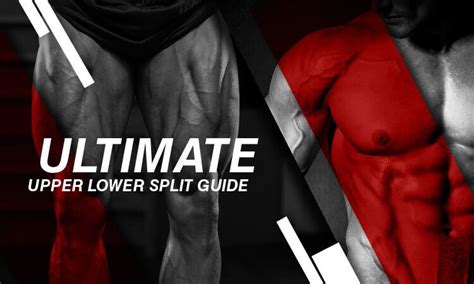Best training split for men to build muscle, strength & peak performance?

Finding the ‘best’ training split for men to simultaneously build muscle, increase strength, and achieve peak performance is a quest many embark upon. While there’s no single universally superior answer, understanding the principles behind different splits and how they align with your specific goals, time constraints, and recovery capacity is crucial. This article will break down popular training methodologies, analyze their benefits, and help you determine the optimal approach for your fitness journey.
The Core Principles of Effective Training
Regardless of the split you choose, certain fundamental principles must be present for any program to be effective. These include progressive overload, which means consistently increasing the demands placed on your muscles; sufficient volume and intensity to stimulate growth; adequate recovery to allow muscle repair; and proper nutrition to fuel your body.
Training frequency – how often you hit a muscle group – also plays a significant role. Studies often suggest that training a muscle group 2-3 times per week can be more beneficial for hypertrophy and strength than hitting it just once.

Popular Training Splits Unpacked
Full Body Split (3x/week)
A full-body split involves training all major muscle groups in each session, typically three times a week with a rest day in between. This approach offers high frequency per muscle group, making it excellent for beginners to establish movement patterns and for advanced lifters seeking high-frequency strength gains. It’s time-efficient for those who can only train a few days a week.
Upper/Lower Split (4x/week)
The Upper/Lower split divides your body into two sessions: one for upper body and one for lower body. You typically perform two upper and two lower sessions per week, allowing for twice-a-week frequency for each muscle group. This split provides a good balance of volume and recovery, making it popular for both muscle growth and strength development.

Push/Pull/Legs (PPL) Split (3-6x/week)
The PPL split organizes exercises by movement pattern: Push (chest, shoulders, triceps), Pull (back, biceps), and Legs (quads, hamstrings, glutes, calves). It can be run 3 days a week (one rotation) or 6 days a week (two rotations). A 6-day PPL offers high frequency and volume, ideal for dedicated lifters with recovery capacity, allowing significant muscle and strength gains.
Body Part (Bro) Split (5-6x/week)
In a body part split, each major muscle group typically gets its own day (e.g., Chest Day, Back Day, Leg Day, etc.). While it allows for high volume on a single muscle group, the frequency per muscle group is usually once a week, which might not be optimal for maximum muscle protein synthesis compared to higher frequency splits. However, many successful bodybuilders have utilized this method effectively.

Optimizing for Muscle, Strength & Performance
For Hypertrophy (Muscle Growth)
Splits that allow for a muscle group to be trained 2-3 times per week, such as Full Body, Upper/Lower, or PPL (6-day), generally prove most effective. They provide sufficient frequency for muscle protein synthesis and allow for adequate weekly volume without overwhelming any single session.
For Strength Gains
Similar to hypertrophy, higher frequency training on compound movements (squats, deadlifts, bench press, overhead press) is often key for strength. Full Body and Upper/Lower splits, or PPL with a focus on progressive overload on main lifts, are excellent choices. Recovery between heavy sessions is paramount.

For Peak Performance & Athleticism
Achieving peak performance goes beyond just muscle and strength; it involves power, endurance, mobility, and recovery. A well-rounded Upper/Lower or PPL split, perhaps with integrated conditioning and mobility work, can be highly effective. The key is balance, ensuring no single aspect is overtrained and that the body can recover and adapt for overall physical prowess.
Choosing the Right Split for You
The ‘best’ split is highly personal. Consider your current training experience – beginners often thrive on full-body routines, while advanced lifters might benefit from more specialized splits. Your available time is critical; if you can only commit three days a week, PPL (once through) or Full Body are viable. If you have 4-6 days, Upper/Lower or 6-day PPL become strong contenders.
Your recovery capacity, sleep quality, and nutrition directly impact how much training volume you can handle. Listen to your body. Most importantly, choose a split you can adhere to consistently. The best program is the one you stick with.

Conclusion
Ultimately, the optimal training split for men seeking muscle, strength, and peak performance is one that aligns with their lifestyle, experience, and goals, while adhering to the core principles of progressive overload, frequency, volume, and recovery. Experiment, listen to your body, and don’t be afraid to adjust your approach as your goals and circumstances evolve. Consistency and intelligent progression will always triumph over searching for a mythical ‘best’ program.









